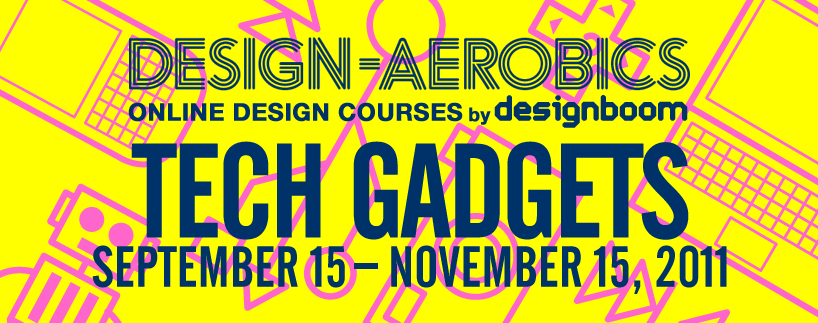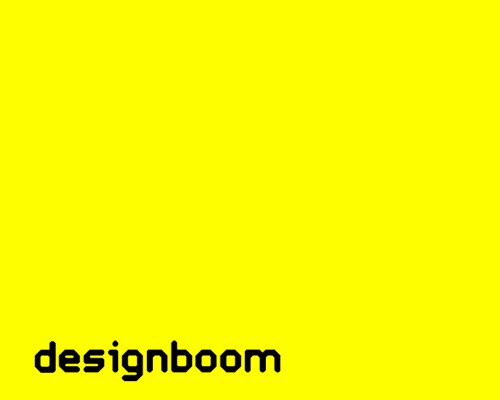— the following is an example of a lesson from the upcoming tech-gadgets course:
augmented reality
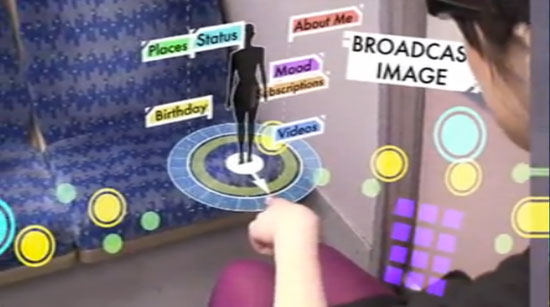 augmented city by keiichi matsuda
augmented city by keiichi matsuda
augmented reality is something that has been written a lot about in the last few years – mostly due to the arrival of smart phone apps which make use of the technology. that said how many of us know how the technology works and how we might benefit from it? is it something that we might want to incorporate into our own work but feel a bit intimidated by. here’ we’ll look at how the technology works, how it’s being explored at present and what might be in the pipeline.
definitions since reality itself is something with contradicting definitions it probably comes as no surprise that augmented reality also remains loosely defined. the most commonly accepted include:
‘an augmented reality system generates a composite view for the user. it is a combination of the real scene viewed by the user and a virtual scene generated by the computer that augments the scene with additional information.’ jim vallino, department of software engineering rochester institute of technology
‘augmented reality: combines real and virtual. is interactive in real time and is registered in 3D. in augmented reality, the user can see the real world around him, with computer graphics superimposed or composited with the real world. instead of replacing the real world, we supplement it.’ ronald azuma, research leader at: nokia research center hollywood
regardless of definitions any augmented reality platform is dependent on: • display (screen, projection) • tracking and input devices (cameras, microphones, touch sensors, GPS, SS compass) • computer (a good amount of processing power and RAM is need for any AR platform) • software (programmed to recognize specific parameters registered through the input such as shapes, edges, faces, colors and so on).
the registration of the virtual image over the real image is crucial to the success of an augmented reality application – since it is what blurs the boundaries between what is real and what isn’t.
through a combination of GPS tracking, image recognition, shape recognition and other means, software recognizes tracking points of an image in the footage of the real world and realizes that it should super-impose a predetermined graphic onto that image. so for example in an app like ‘layar’ images of buildings are cross referenced with the GPS location and the software knows which graphics to put where and how to move them when the camera moves. in simple terms – the software is ‘trained’ to recognize specific forms or colors and knows how to react to them.
augmented reality poses exciting opportunities for entertainment, work and aspects of everyday life since it has the possibility to add imagery and sounds which otherwise don’t exist. a simple use could be telling you where you are right now and how to get somewhere else simply by having an app on your phone recognize the street where you are via it’s camera and GPS. soldiers, whose protective goggles have been modified to include a camera and projector can see step by step instructions on how to repair broken down vehicles, disarm a bombs or attend to a casualty aided by real-time step by step diagrams projected onto the vehicle, bomb or patient. the possibilities gaming are also incredible – with the most mundane real world surroundings transformed into places of adventure.
keiichi matsuda is a designer and film maker who often enjoys explore futuristic design concepts through the medium of film. one of his latest experiments is augmented city, a small walk through a few minutes in different people’s lives in a city filled with augmented reality technology. beyond forecasting the way people may live in the future, the video demonstrates a series of different technological devices and interfaces. beyond the architecture we have built , the future in matsuda’s eyes will be as much about virtual architecture and information. the architecture of the contemporary city is no longer simply about the physical space of buildings and landscape, more and more it is about the synthetic spaces created by the digital information that we collect, consume and organise; an immersive interface may become as much part of the world we inhabit as the buildings around us. more
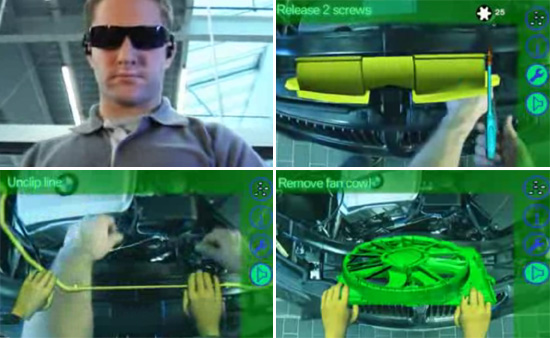
BMW have developed a concept for augmented reality glasses, which assist mechanics in performing maintenance on the company’s cars. the glasses point out the part that needs replacing, the screws that need turning, while an audio track talks the mechanic through the steps of the repair.’in future, the real world is set to combine with the virtual at BMW service. BMW augmented reality creates this bridge and extends the real world by adding virtual information. we are planning to use this technology as a means to assist BMW service staff in their highly demanding technical work. using special data goggles and wireless access to a powerful computer, BMW mechanics have all the information at their disposal, precisely where they need it: in the workshop, at the vehicle.’ no details are available as to if or when this concept will be implemented by BMW but such a system for home mechanics or any kind of virtual instruction guide seems to hold potential. more
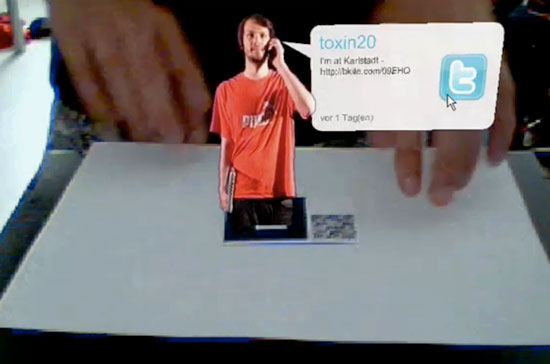
german designer jonas jager developed a business card that uses augmented reality to display his contact information and samples of his design work. when held up to a web camera the card comes alive, showing a portrait of jager. the card features two small squares with a pattern printed on the front. the smaller square is a qr code filled with the information on the card and the larger square is a reference for the web cam. jager programmed the card so that users can call him online to talk or view his design portfolio. the interactive card allows the user to flip the card around seeing full 3D images. more
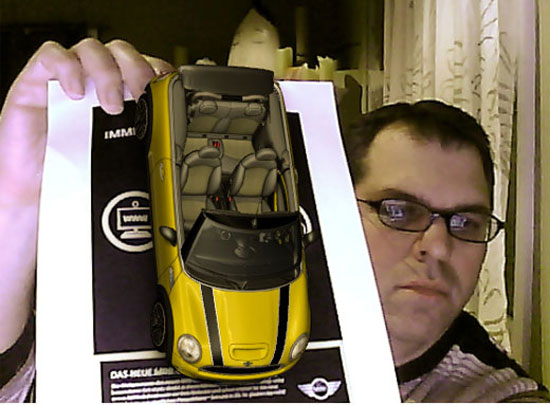
this mini ad features the special pattern used in AR technology and when looked at through a webcam displays a 3-d model of the mini cabrio. the video below shows a step by step guide to how the ad was executed. this is believed to be one of the first uses of AR in an advertisement, and is free to download online in pdf format. while some critics are saying print is dead, AR technology suggests that they need to take another look. more
the london based fashion studio ‘cassette playa’ presented one of their collections using augmented reality during london fashion week. it featured outfits that had embedded digital codes on them, that when viewed through a digital camera added a virtual layer over top. for the presentation, models walked up and down the catwalk, stopping at the front to pose in front of a camera. the camera’s view was projected on a screen where the virtual designs could be seen. each virtual design was created as an extension of the wearer, allowing them to become something different through the clothing. more
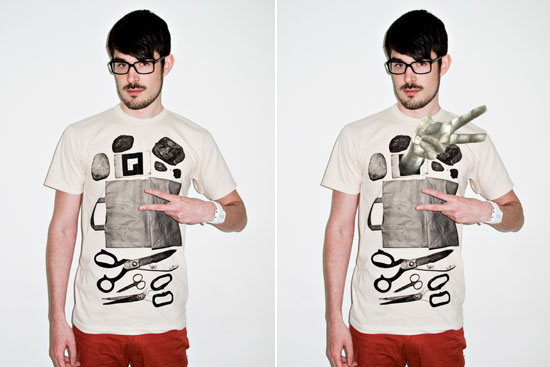
t-post is the first wearable magazine since it is published every six weeks as a t-shirt. for their 51st issue, the magazine created a t-shirt that can be digitally enhanced through augmented reality. the shirt features a black and white image of some rocks, a paper bag and multiple pairs of scissors. however when viewed through a web cam, the t-shirt becomes and interactive game of rock, paper, scissors. a 3D hand pops out from the shirt and interacts with the user, playing against them in real time. more
augmented landmarks – microsoft has been working on a variety of applications for their bing maps service including streetside photos, an app which overlays user photos onto street views. the application takes geo-tagged images from the photo sharing site flickr and overlays them onto street views in bing maps. the service is in the test phase in seattle, san francisco and vancouver. because the application sources the images from flickr, anyone can have their images overlayed on the maps. the service provides a wider context to the photographs and also adds and artistic dimension to the otherwise flat, map view.
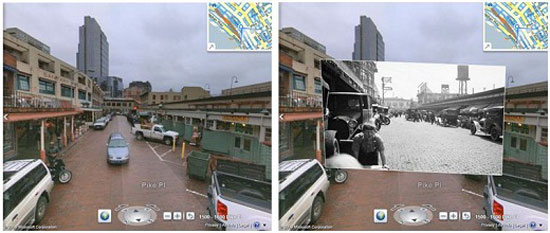
the service gets really interesting because it can also use historic photos given users the ability to see what a street looked like in the past. the project’s architect is blaise aguera y arcas, who was also a co-creator of photosynth. he demonstrated the project at the TED conference (shown above).
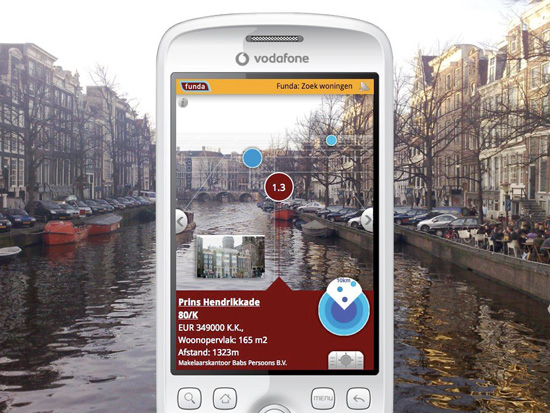
‘layar’ is a mobile phone app that combines the camera in your phone and internal compass with GPS information to produce an ‘augmented reality’ of digital information laid over a real-time street view. more
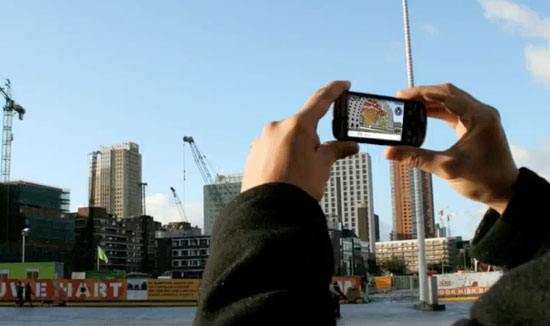
the netherlands architecture institute (NAI) has developed the world’s first augmented reality architecture application. named sara, the application allows users to view information on existing buildings and browse 3D models of building in development. the application is built on the augmented reality browser layar. the NAI is planning to make the netherlands the first country in the world to have its entire architecture viewable on smartphones through sara. the app is available on the iphone and android phones and will be released in february. by pointing their phone at a building, sara shows the user photos, video, 3D models, scale models and interesting details about each building design. the first building to appear in 3D through sara is the market hall in rotterdam by MVRDV. more 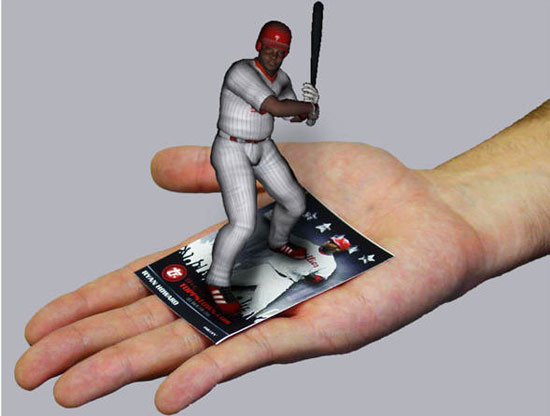
the sports trading card company topps has enhanced their 2009 card collection with augmented reality to bring them to life. trading cards haven’t changed much over time, but topps recently launched a new type of card that when viewed through a computer camera, becomes an interactive 3d animation. using augmented reality, the cards display a small animated player that rotates and moves with the card. the user can even interact with the player, by placing it on a flat surface. each player has a different game to play ranging from throwing a baseball at a target to catching pop-flies all controlled via the computer keyboard. the topps 3D live cards are already available for baseball and football, with other sports to come soon. the technology for the cards was developed by total immersion, a french company specializing in augmented reality. more
the digital production company qosmo teamed up with terada design architects to create n building, a commercial tower in tokyo that has an augmented reality façade. the two companies collaborated to design a façade using two-dimensional QR codes that can be read using a mobile phone. users can point their device at the building and see up to date info from all the shops within. qosmo also developed an iphone application that allows people to see comments left by users, browse shop info and even download coupons. the comments are tagged through twitter using GPS and are continuously updated.
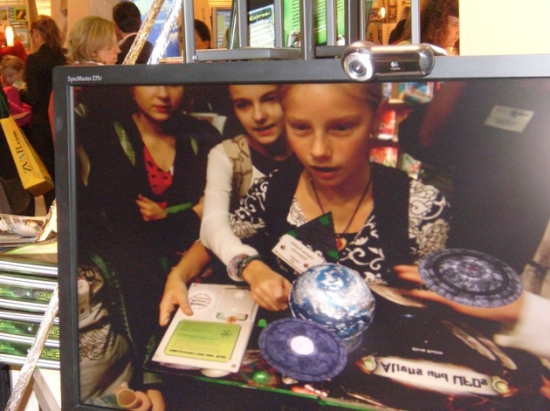
the german-based company metaio has developed a range of educational AR games and books. combining the real world with three-dimensional figures is an immersive experience with potential. more
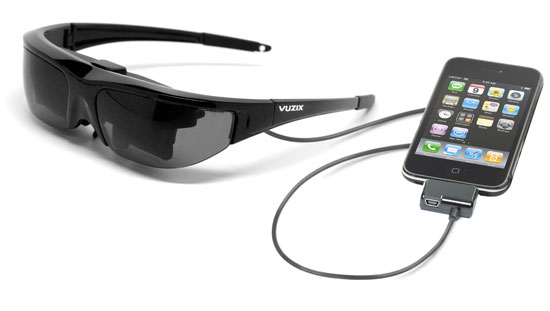
uzix makes a variety of video eyewear that allows users to view video content up close and personal. the company recently debuted a new piece of eyewear that would enable augmented reality functionality on what appears to be sunglasses. the new wrap 920AR eyewear would overlay information over video of what the user is looking at while wearing the device. while augmented reality on static displays has unleashed numerous applications, this new form of continuous AR will have even more applications. the eyewear uses stereo cameras to capture the video and gives the user a 67 inch display when seen from 10 feet away. the company will begin selling the new device later this year and will also offer the AR functionality as an add on to their existing video eyewear designs. more

university of washinton professor babak amir parviz and his students want to embed AR technology right into the eye. parviz and his students have been working on AR embedded contact lenses that utilize sensors and wireless technology.
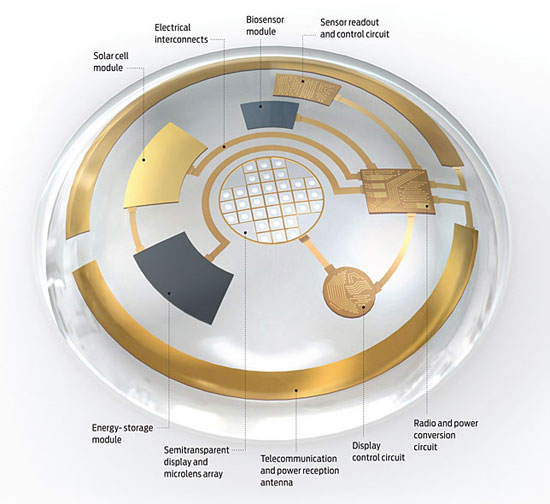
right know the technology is in its early days, but researchers hope that one day hundreds of semitransparent LEDs can be embedded onto a thin lens to create a display for users. this eye implanted display would most likely rely on an external device for controls and processing.
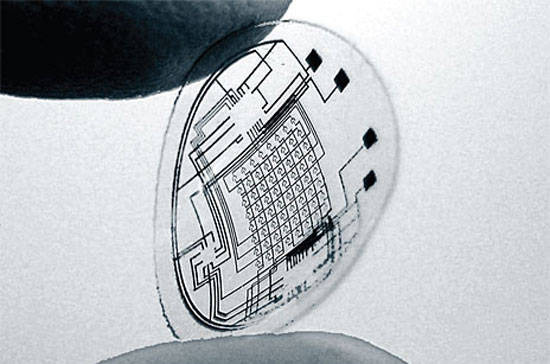
it could be used for entertainment purposes or even to monitor one’s health. next time you go to get your eyes checked at the doctor, they may also be able to offer you the latest contact lens display. more
—  « BACK TO THE DESIGN-AEROBICS HOMEPAGE
« BACK TO THE DESIGN-AEROBICS HOMEPAGE
design aerobics 2011 (12)
PRODUCT LIBRARY
a diverse digital database that acts as a valuable guide in gaining insight and information about a product directly from the manufacturer, and serves as a rich reference point in developing a project or scheme.
